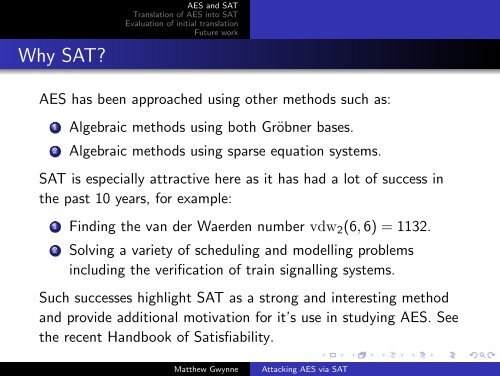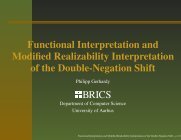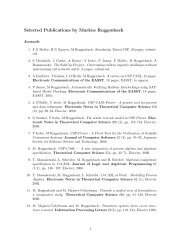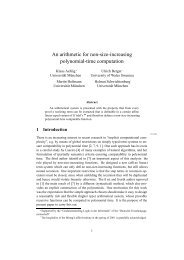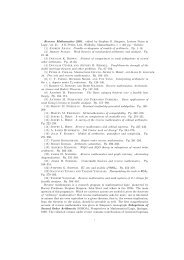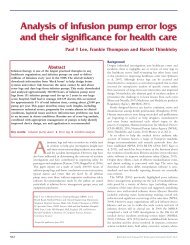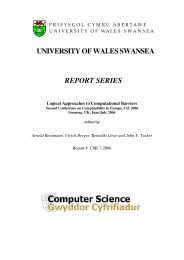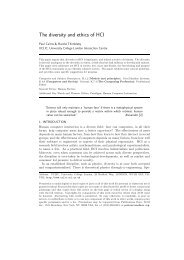Attacking AES via SAT - Department of Computer Science
Attacking AES via SAT - Department of Computer Science
Attacking AES via SAT - Department of Computer Science
Create successful ePaper yourself
Turn your PDF publications into a flip-book with our unique Google optimized e-Paper software.
Why <strong>SAT</strong>?<br />
<strong>AES</strong> and <strong>SAT</strong><br />
Translation <strong>of</strong> <strong>AES</strong> into <strong>SAT</strong><br />
Evaluation <strong>of</strong> initial translation<br />
Future work<br />
<strong>AES</strong> has been approached using other methods such as:<br />
1 Algebraic methods using both Gröbner bases.<br />
2 Algebraic methods using sparse equation systems.<br />
<strong>SAT</strong> is especially attractive here as it has had a lot <strong>of</strong> success in<br />
the past 10 years, for example:<br />
1 Finding the van der Waerden number vdw 2 (6, 6) = 1132.<br />
2 Solving a variety <strong>of</strong> scheduling and modelling problems<br />
including the verification <strong>of</strong> train signalling systems.<br />
Such successes highlight <strong>SAT</strong> as a strong and interesting method<br />
and provide additional motivation for it’s use in studying <strong>AES</strong>. See<br />
the recent Handbook <strong>of</strong> Satisfiability.<br />
Matthew Gwynne<br />
<strong>Attacking</strong> <strong>AES</strong> <strong>via</strong> <strong>SAT</strong>


